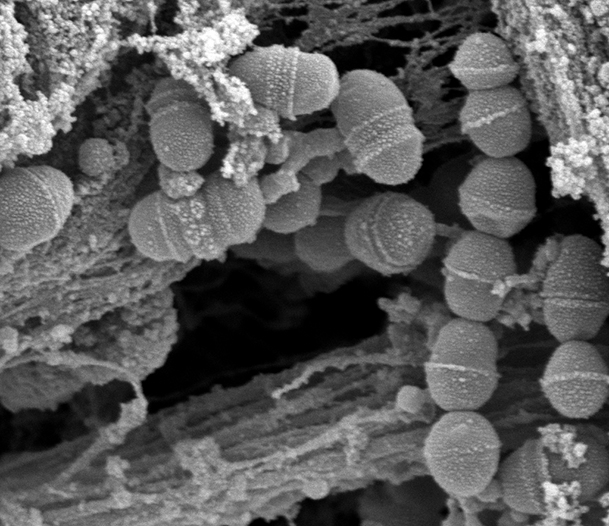Home » News » Identifying Innate Antimicrobial Strategies during Pregnancy-Related Infections
Identifying Innate Antimicrobial Strategies during Pregnancy-Related Infections
Posted by anderc8 on Wednesday, June 21, 2017 in News, TIPs 2015.

Jennifer Gaddy
Written by Jennifer Gaddy, Assistant Professor of Medicine, Dept. of Medicine, Division of Infectious Diseases
Group B Streptococcus (GBS) infections during pregnancy cause serious complications that can lead to preterm labor as well as maternal and neonatal sepsis. These outcomes carry serious financial and emotional burdens for families around the globe. A better understanding of how this bacterium infects a pregnant host could shed light on potential interventions to save both mother and child. The interdisciplinary team including the Gaddy and Aronoff Labs, part of the Division of Infectious Diseases (Department of Medicine) at Vanderbilt University Medical Center, in conjunction with the Manning Lab at Michigan State University (Department of Microbiology and Molecular Genetics) is committed to leveraging the skills and resources between them to solving the complex problems associated with preterm birth and neonatal infections. To that end, their collaborative research program seeks to determine the role that the innate immune system plays in controlling how bacteria (such as GBS) infect the host and subsequently cause disease.
The Centers for Disease Control and Prevention (CDC) indicate GBS is the leading cause of serious bacterial infections in newborns. GBS commonly colonizes in the gastrointestinal or reproductive tract of women, and in the setting of pregnancy, can ascend into the membranes surrounding the fetus, causing inflammation that leads to disease progression. Our interests include determining some of the factors produced by the host immune system which could help inhibit bacterial proliferation in the host, and ameliorate disease outcome. To accomplish this, we utilized a novel pregnant mouse model of ascending vaginal GBS infection. This model, which was pioneered by collaborators in Adam Ratner’s lab at New York University, mirrors the human model in which vaginally inoculated bacteria ascend up the cervix and into the gravid uterus. Once inside, the bacteria transverse the placental membranes and attack the fetus, causing septicemia, inflammation and destruction of the membranes – ultimately resulting in preterm birth.
Because the Aronoff and Gaddy Labs have a rich tradition of studying antimicrobial proteins as host defense strategies, and the mechanisms by which bacteria respond to these, we sought to determine if the host was deploying antimicrobial proteins in the placenta in response to infection. The Aronoff and Gaddy Labs are both part of the Pre3 Initiative which fosters interdisciplinary research at the interface of immunology, infectious disease and microbial pathogenesis. This project was spearheaded by a medical student named Vishesh Kothary, who worked diligently and completed the project in short order. Interestingly, we discovered that lactoferrin abundance was enhanced in GBS-infected placenta compared to uninfected tissues. Lactoferrin is a host glycoprotein that participates in nutritional immunity by binding iron and chelating it away from invading microorganisms. This is important because lactoferrin could be used as a diagnostic tool to reveal infections and inflammation earlier in the pregnancy, leading to better strategies to prevent preterm birth and neonatal sepsis. Additionally, our work shows that when lactoferrin is applied to GBS in culture, the bacterial growth is inhibited. Thus, lactoferrin could potentially be used as an antimicrobial compound in the reproductive tract during pregnancy.
We will continue to use this model to investigate antimicrobial strategies to promote maternal-fetal health. These tools will provide insight into the role of the innate immune system during pregnancy and will also lay the foundation for drug discovery to treat reproductive diseases such as preterm birth. We encourage you to learn more about this mouse model by contacting the Gaddy or Aronoff Labs directly at jennifer.a.gaddy@vanderbilt.edu or david.aronoff@vanderbilt.edu. Furthermore, we invite you to join the conversation by leaving comments or asking questions in the space provided below.

